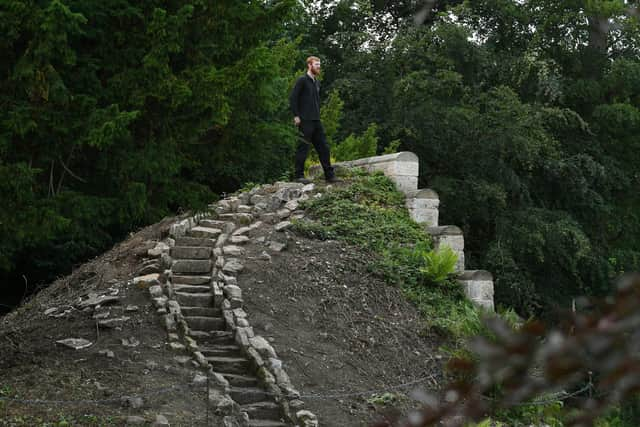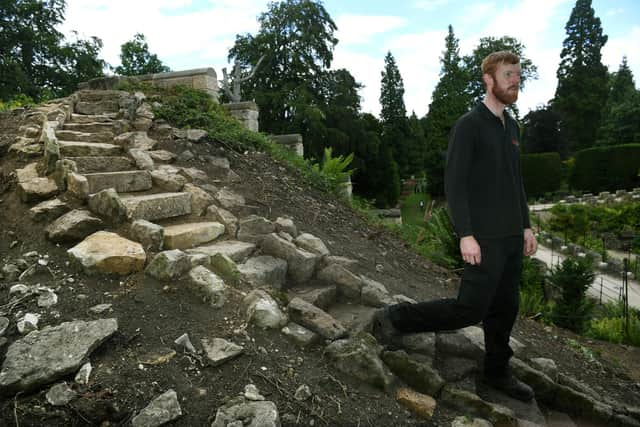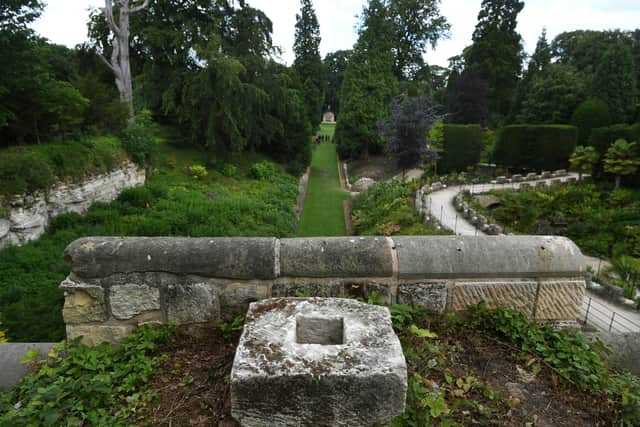Brodsworth Hall: Gardeners at Yorkshire country house uncover lost Victorian steps that had been forgotten about for 50 years
Staff at the English Heritage property near Doncaster had always suspected there was ‘something’ buried beneath thick undergrowth on the slope leading up to the ‘eyecatcher’, a 19th-century folly installed at the end of the target range that was used for archery by the Thellusson family.
Despite no evidence of the flight of steps existing on a map of the pleasure grounds produced in 1892, this summer the gardens team finally cleared decades of planting and found an almost ‘perfect’ set of stone stairs underneath.
Advertisement
Hide AdAdvertisement
Hide AdArchaeologists will now investigate the site further, but head gardener Daniel Hale thinks it could be ‘anything between 50 and 100 years’ since the steps were last visible, as the grounds were already in a state of neglect when Brodsworth passed to English Heritage in the early 1990s.


“”When we first cleared the ivy from the eyecatcher a few years ago, we could see some stone protruding from the vegetation, but the target range restoration project was the priority then. We came back to it this year, with an archaeologist. We weren’t sure there were steps, but we had an inkling because of their shape.
"There was a lot more stone than we anticipated, and we uncovered these fixed steps in perfect condition. They lead up to something at the back of the eyecatcher, but we’re not sure what that could be yet.”
The team have found a square socket at the top of the slope that they think could once have supported a flagpole or a gas lamp, meaning it is likely the steps were mainly used by estate workers undertaking maintenance tasks.
Advertisement
Hide AdAdvertisement
Hide Ad"Sheffield University are bringing their ground-penetrating radar, so we should be able to find anything else that was at the back of the mound. We can’t believe the steps are still in situ, but they’re difficult to age. The eyecatcher isn’t on old maps, so it’s hard to date it as a feature, but we think it could have been made from stone taken from the old Georgian house, and could be Victorian,” added Mr Hale.


"On the old OS maps from 1892, it is not an identifiable building, and the eyecatcher was only a folly. English Heritage took on the house in the 1990s and there has been no work done to the area until now. It could be 50 to 100 years since the steps were last used. The amount of vegetation suggests decades, but we’ll have a better idea of the date once the investigations are over.”
Mr Hale thinks it is unlikely that the steps will ever be in public use, as they were not designed for regular foot traffic and were not part of the garden ‘walk’, the pleasure route used by the Thellussons and their guests.
Their discovery is the latest in a number of successful restorations of old structures that had fallen into disrepair. Mr Hale has supervised the rejuvenation of the game larder, gardeners’ privy and Swiss chalet-inspired Target House, where the family hosted archery parties. All were inaccessible just a few years ago but are now enjoyed by visitors. He studies old plans and maps of the estate to work out what could still be hidden from sight.
Advertisement
Hide AdAdvertisement
Hide Ad"It’s exciting – Brodsworth is the garden that keeps on giving.”


